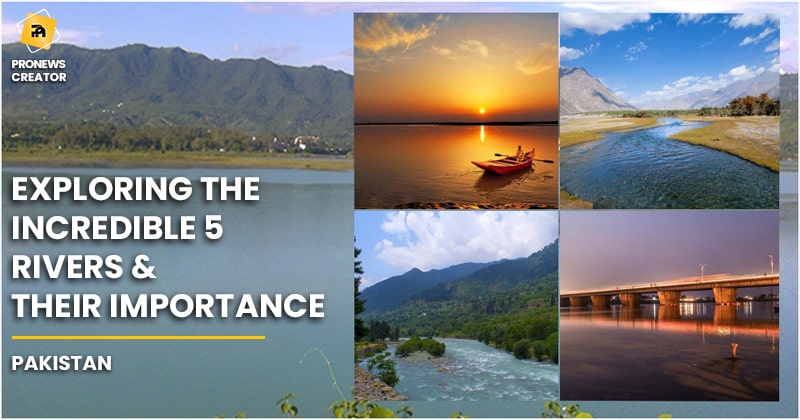The gigantic yet clear rivers are brilliant to watch. Working with waves and quietness can make anyone peaceful and fair in a moment.
The rivers are of economic and political importance. Rivers are the fundamental wellspring of drinking water.
We use these rivers in the water framework and hydropower age.
Pakistan has superb metropolitan associations, stunning scenery, plans, and a district of the planets with sublime rivers.
The river diagram of Pakistan starts from the snow-covered Himalayan and the Karakoram range. Continue to assess to considerably more center around the 5 Rivers of Pakistan.
About the importance of rivers
Rivers expect a crucial part of any country due to water framework property. It directly grooms up the creation of a nation.
Rivers are the best wellspring of water framework and give guessed that water to harvest the crops.
Pakistan has one of the most amazing arriving water framework structures, the Indus Bowl Water framework System (IBIS). The design consolidates five huge rivers, the Indus, Jhelum, Chenab, Ravi, Sutlej, and their catchments.
Pakistan is similarly powerless against the effects of natural change, considering its geo-climatic situation.
Also Read About: Top 17 KPK Beautiful Places You Ought To Visit once!
List of 5 main rivers of Pakistan
The plan is involved five rivers that travel through the Punjab region. In this way, the name ‘Punjab’ – ‘and’ proposes five, and ‘aab’ implies water. The 5 Rivers of Pakistan are:
| 1. | River Jhelum |
| 2. | River Chenab |
| 3. | River Ravi |
| 4. | River Sutlej |
| 5. | River Indus |
Details of the 5 main rivers of Pakistan
In the article, we will look at the 5 Rivers of Pakistan and the facts you know about these rivers.
1. River Jhelum
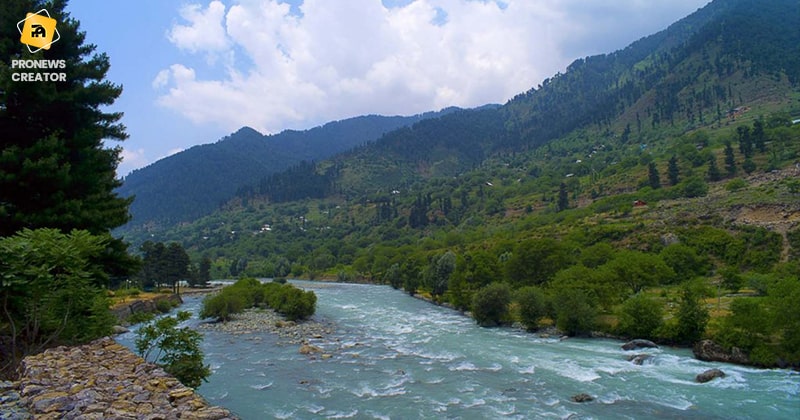
[See Map]
River Jhelum is coordinated in northern India and eastern Pakistan and is among the Pakistan rivers that flow today through the Kashmir Valley. It is a feeder of the Chenab River and has a full-scale length of around 725 kilometers (450 mi).
The river climbs from the Verinag spring, coordinated at the ground of Pir Panjal, Kashmir.
Then, it enters its tributaries, the Lidder River at Khanabal and the Sind River at Shadipora in Kashmir Valley. It goes through Srinagar and Wular Lake before entering Pakistan.
It connects with the rest of Pakistan and Pakistani Kashmir at the Kohala Stage east of Circle Bakote.
It has connections by the Poonch River and streams into the Mangla Dam storage space in the Mirpur Region.
2. River Chenab
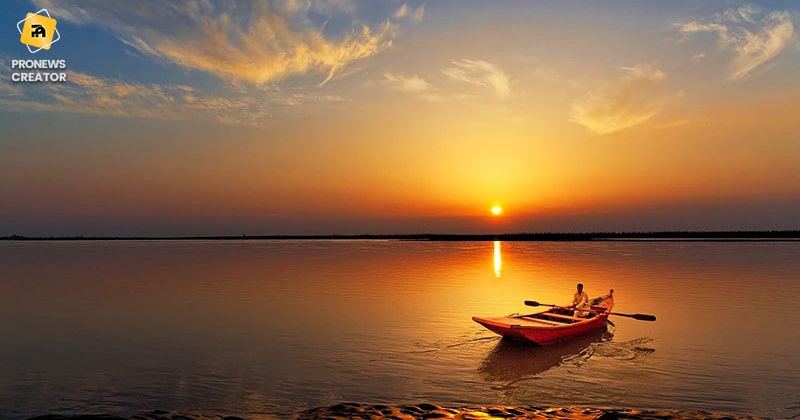
[See Map]
Pakistan is a country well off in generally ordinary grandness and brilliant viewpoints. Pakistan has everything from rich green fields to massive mountain reaches to raised deserts.
River Chenab, especially like River Jhelum, is disconnected from India and Pakistan.
It is among those rivers of Pakistan that climb in the upper Himalayas in the Lahaul and Spiti area of Himachal Pradesh state, India, and courses through the Jammu district of Jammu and Kashmir into the fields of Punjab, Pakistan, going before spilling into the Indus River near the city of Uch Sharif.
The river was known to Indians in the Vedic epoch. In 325 BC, Alexander the Unique spread out the town of Alexandria on the Indus over the long haul known as Uch Sharif.
Jhelum and Ravi join Chenab and Beas with Sutlej. And a short period later, Sutlej and Chenab join to push toward Panjnad near Uch Sharif.
The brought-together creek heads southwest for around 45 miles and joins the Indus River at Mithankot. The Indus happens into the Center Eastern Sea.
3. River Ravi
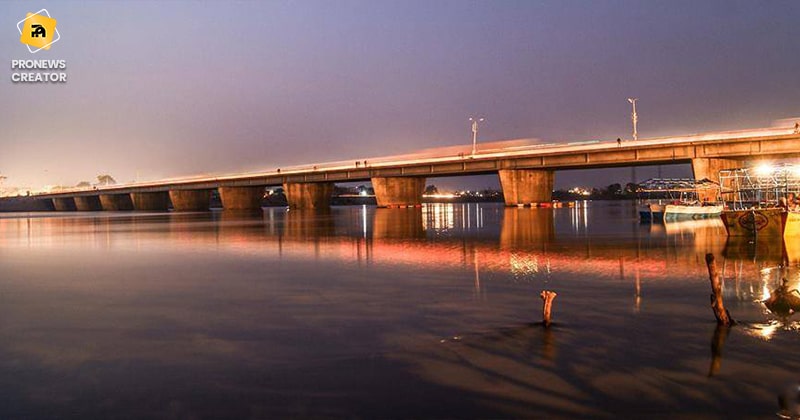
[See Map]
The Ravi River streams across northwest India and eastern Pakistan. It is furthermore one of the Indus Plan’s six rivers in Punjab.
The waters of the Ravi River were entrusted to India under the Indus Water Approach.
Likewise, the Indus Bowl Undertaking used water from the Indus plan’s western rivers to restock the Ravi in Pakistan.
The Raavi River was known as Iravati in previous times, according to the Vedas.
The Ravi River is one of the central bits of the Indus River Bowl and fills in as the bowl’s headwater.
The Ravi River’s waters stream into the Center Eastern Sea (Indian Ocean) through Pakistan’s Indus River.
In Himachal Pradesh, India, the river moves in the Bara Bhangal area of Kangra. After a 720-kilometer (450 mi) experience through India, the river exhausts a total wire area of 14,442 square kilometers (5,576 sq mi).
In Pakistan, the Ravi River is likewise fundamental for vegetation. Deodar, walnut, Quercus ilex, mulberry, birch, elegant pine, wound cypress, chinar, Cedrela serata, sisso, olive, and Kakkar are a piece of the plants.
4. River Sutlej
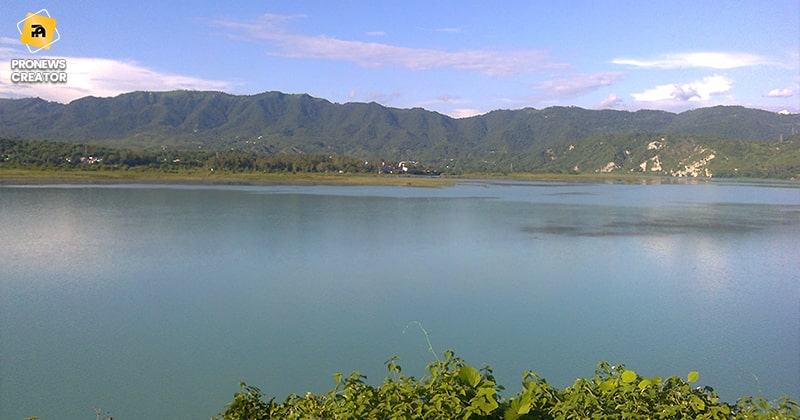
[See Map]
River Sutlej is the longest river in Pakistan that streams from the Punjab region. It is a transboundary river coordinated between northern India and Pakistan.
River Sutlej is overall called Satadree in the close by language. The wellspring of the Sutlej is west of the catchment area of Lake Rakshastal in Tibet.
The waters of the Sutlej are consigned to India under the Indus Waters Settlement between India and Pakistan.
The yearly advancement of the river is around 14 million acre-feet (MAF), the upstream of the Ropar flood coordinated across the Sutlej River downstream of the Bhakra dam.
River Sutlej is gigantic for Pakistan on account of its part in the hour of hydroelectricity.
River Sutlej addresses different hydropower projects in Pakistan.
The assignments integrate the 1,325 MW Bhakra Dam, the 1,000 MW Karcham Wangtoo Hydroelectric Plant, and the 1,500 MW Nathpa Jhakri Dam.
5. River Indus
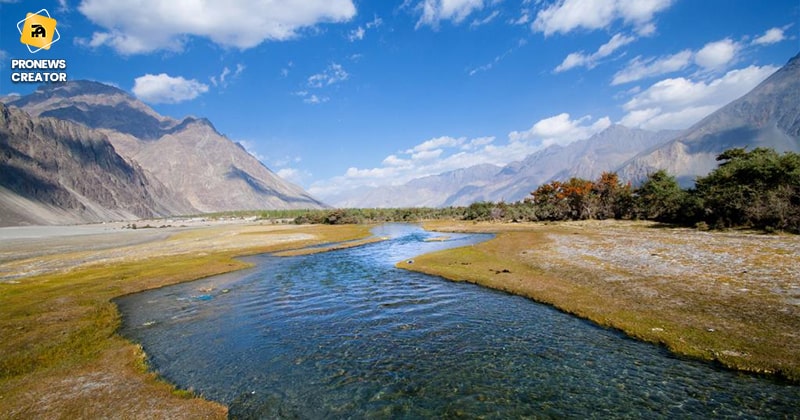
[See Map]
The Indus river is the most extended in Pakistan, beginning from the Himalayan area.
It is the world’s 21st most conspicuous river to the extent that it yearly water stream. With a full-scale length of 3,180 kilometers, it is other than Pakistan’s lifeline.
Indus River begins from the Tibetan level around Lake Mansarovar in China.
It then, at that point, goes through Jammu and Kashmir, enters the Gilgit-Baltistan (at present Northern Areas of Pakistan) locale and goes through the entire length of the country, and meets with the Bedouin Sea.
The Indus River meets the water conditions of Pakistan and is the central help for agribusiness.
The fundamental branches of the Indus are the Astor River, Balram River, Gilgit River, Kabul River, Tanubal River, and Zanskar River.
Other Eminent Rivers of Pakistan
Close by the five huge rivers portrayed above, Pakistan’s river system combines a few extra unpretentious rivers and feeders, which are in the under with their lengths.
River/Length (KM)
| 1. | Gomal River/400 |
| 2. | Soan River/250 |
| 3. | Smack River/240 |
| 4. | Kunar River/480 |
| 5. | Hingol River/560 |
| 6. | Gilgit River/240 |
| 7. | Kunhar River/166 |
| 8. | Dasht River/430 |
Also Read About: Top 14 recommended Sindh beautiful places for your next trip!
Last thoughts
The presence of rivers is critical for supporting any dependable economy.
Rivers are the fundamental wellspring of drinking water used in water structure and hydropower age.
These 5 Rivers of Pakistan are monetarily colossal for Pakistan, yet they other than honor the country’s various industries, similar to the advancement industry, power age, and improvement.
If you have any solicitations related to the rivers of Pakistan, leave us a comment, and we will think that you are immediate.

